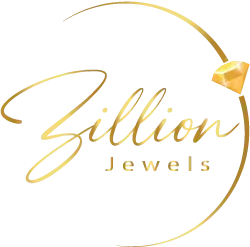Jewelry Repairs
Jewelry Inspection and Complimentary Cleaning with Expert Suggestions
We offer a complimentary jewelry inspection and cleaning service to ensure your pieces are in top condition. Our expert jewelers will carefully examine your jewelry and provide personalized suggestions for any necessary repairs or maintenance. With our thorough inspection and cleaning service, you can enjoy your jewelry with confidence and peace of mind.
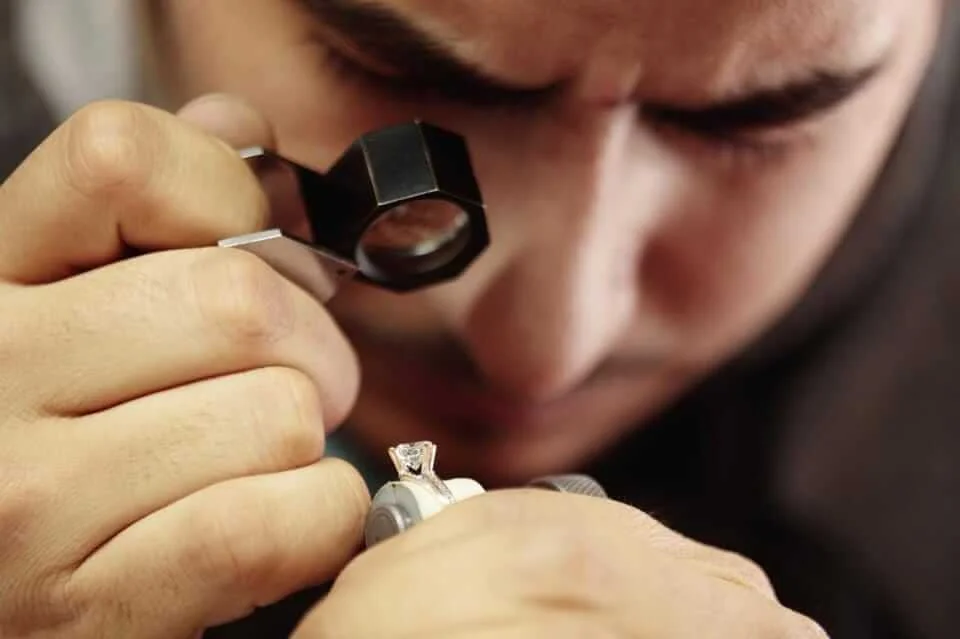

Jewelry Inspection and Complimentary Cleaning with Expert Suggestions
We offer a complimentary jewelry inspection and cleaning service to ensure your pieces are in top condition. Our expert jewelers will carefully examine your jewelry and provide personalized suggestions for any necessary repairs or maintenance. With our thorough inspection and cleaning service, you can enjoy your jewelry with confidence and peace of mind.

Ring sizing is a common service provided by jewelers that allows customers to adjust the size of their rings to ensure a comfortable fit. Sizing a ring up or down can be a delicate process, and the method used depends on several factors, including the type of metal and number of stones, as well as the type of stones used in the ring.
When it comes to sizing a ring up or down, the type of metal is an important consideration. Some metals, such as gold and platinum, can be easily resized without damaging the integrity of the metal. However, other metals, such as tungsten and titanium, cannot be resized due to their hardness and durability. In these cases, it may be necessary to purchase a new ring in the correct size.

Ring sizing is a common service provided by jewelers that allows customers to adjust the size of their rings to ensure a comfortable fit. Sizing a ring up or down can be a delicate process, and the method used depends on several factors, including the type of metal and number of stones, as well as the type of stones used in the ring.
When it comes to sizing a ring up or down, the type of metal is an important consideration. Some metals, such as gold and platinum, can be easily resized without damaging the integrity of the metal. However, other metals, such as tungsten and titanium, cannot be resized due to their hardness and durability. In these cases, it may be necessary to purchase a new ring in the correct size.
The number and type of stones in the ring can also impact the resizing process. If the ring has a single stone, it is typically easier to resize, as the stone can be safely removed before the resizing process begins. However, if the ring has multiple stones, the process becomes more complex. The jeweler must carefully remove the stones before resizing the ring and then reset them once the sizing is complete.
The type of stones used in the ring is also an important consideration. Hard and durable stones such as diamonds can withstand the resizing process without damage. However, softer stones such as opals or pearls may be more prone to damage during the process. In these cases, the jeweler must take extra care to ensure that the stones are protected during the resizing process.
The ring sizing process typically involves cutting the band and adding or removing metal to achieve the desired size. If the ring needs to be sized down, the jeweler will carefully cut a section of the band and remove the excess metal. If the ring needs to be sized up, the jeweler will add metal to the band and then solder it together, ensuring a seamless finish.
Tips, Prongs, and Channel Repair Process
Tips, prongs, and channels are all important components of many types of jewelry, particularly rings. Over time, these components can become damaged or worn, leading to the need for repair. The process of repairing tips, prongs, and channels in jewelry typically involves the following steps
For channel repairs, the process is similar, but may involve additional steps depending on the extent of the damage. For example, if a stone has fallen out of a channel setting, it will need to be replaced before the channel can be repaired. The damaged metal will be removed, the channel will be reshaped, and the new stone will be securely set in place.
Overall, the process of repairing tips, prongs, and channels in jewelry requires a skilled jeweler with experience in metalworking, stone setting, and jewelry repair. By following the above steps, they can ensure that the piece is restored to its original beauty and functionality, and that any stones are securely held in place for years to come.
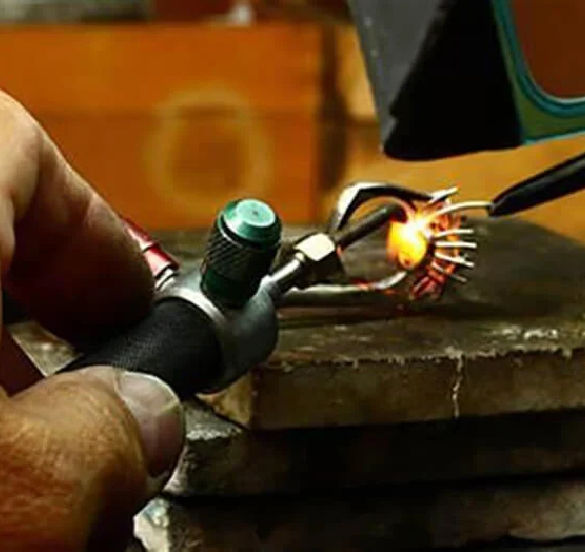

Tips, prongs, and channels are all important components of many types of jewelry, particularly rings. Over time, these components can become damaged or worn, leading to the need for repair. The process of repairing tips, prongs, and channels in jewelry typically involves the following steps
For channel repairs, the process is similar, but may involve additional steps depending on the extent of the damage. For example, if a stone has fallen out of a channel setting, it will need to be replaced before the channel can be repaired. The damaged metal will be removed, the channel will be reshaped, and the new stone will be securely set in place.
Overall, the process of repairing tips, prongs, and channels in jewelry requires a skilled jeweler with experience in metalworking, stone setting, and jewelry repair. By following the above steps, they can ensure that the piece is restored to its original beauty and functionality, and that any stones are securely held in place for years to come.
- Evaluation: The jewelry piece is carefully examined to assess the extent of the damage to the tips, prongs, or channels. The type of metal and stones involved will also be taken into consideration.
- Removal: If a prong or tip is severely damaged or worn, it may need to be removed entirely before it can be repaired. This is typically done with a jeweler's saw or cutting tool.
- Rebuilding: Once the damaged prong or tip is removed, it will be replaced with new metal. The jeweler will use a torch to carefully heat the metal to the point where it can be molded and shaped to fit the original design of the piece.
- Refitting: The newly rebuilt tip or prong is then fitted to the piece of jewelry. The jeweler will ensure that it is securely in place and that it holds any stones firmly.
- Finishing: Once the tip or prong is securely in place, any rough edges or imperfections are smoothed out. The piece is then cleaned and polished to restore its original luster.
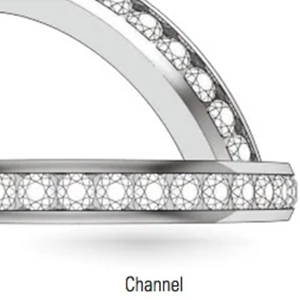
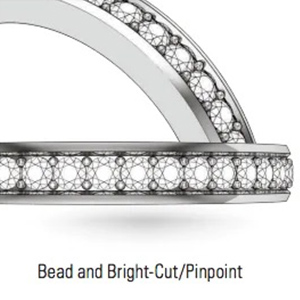

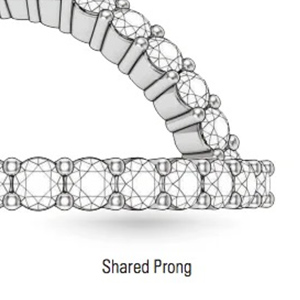

Clasps, Fig 8’s, and Tabs: Repair and Maintenance for Jewelry Fastenings
Clasps, Fig 8's, and Tabs are types of closures used on necklaces, chains, and bracelets to secure them in place. Clasps are the most common type of closure, and they come in a variety of shapes and sizes, including lobster, spring ring, toggle, and magnetic. Fig 8's are a type of clasp that has an oval shape with two loops at the top and bottom that interlock to secure the closure. Tabs, also known as end tabs, are the flattened metal pieces that attach to the end of a necklace or chain and are used to secure the clasp.
When repairing jewelry with these types of closures, the process can vary depending on the specific issue. If a clasp is damaged or not closing properly, it may need to be replaced. The same is true for Fig 8's and Tabs. In some cases, it may be possible to repair a damaged closure by adjusting or replacing the mechanism that holds it in place.

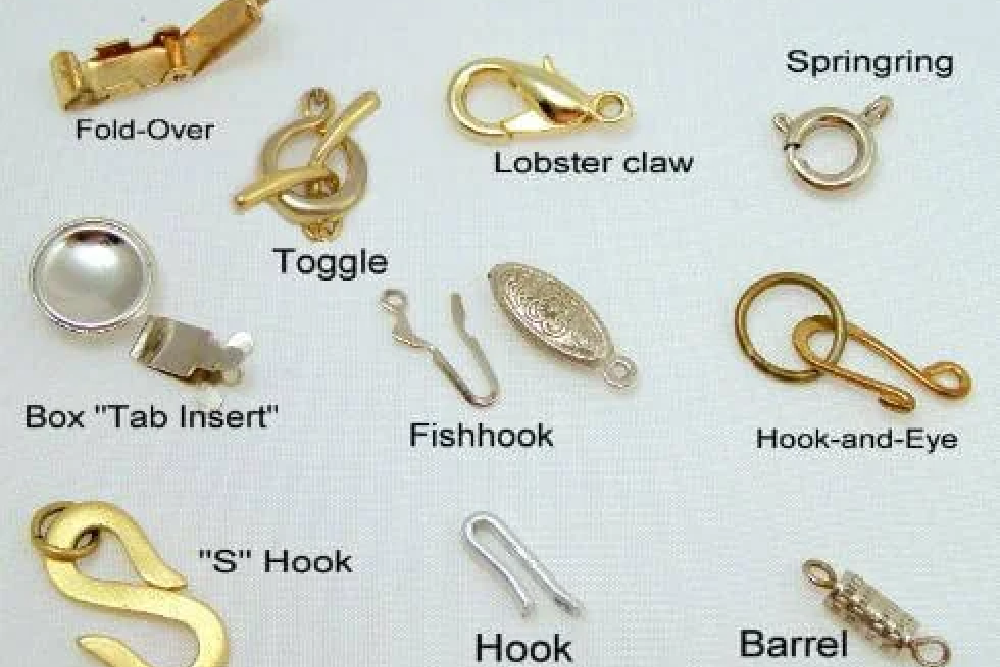
Clasps, Fig 8's, and Tabs are types of closures used on necklaces, chains, and bracelets to secure them in place. Clasps are the most common type of closure, and they come in a variety of shapes and sizes, including lobster, spring ring, toggle, and magnetic. Fig 8's are a type of clasp that has an oval shape with two loops at the top and bottom that interlock to secure the closure. Tabs, also known as end tabs, are the flattened metal pieces that attach to the end of a necklace or chain and are used to secure the clasp.
When repairing jewelry with these types of closures, the process can vary depending on the specific issue. If a clasp is damaged or not closing properly, it may need to be replaced. The same is true for Fig 8's and Tabs. In some cases, it may be possible to repair a damaged closure by adjusting or replacing the mechanism that holds it in place.
For necklaces and chains, the size of the closure and end tabs is an important consideration when repairing or replacing the closure. The size of the closure needs to match the width of the necklace or chain, while the end tabs need to fit securely and snugly over the chain ends. Jewelry repair professionals can help ensure that the replacement closure and end tabs are the correct size and type for the piece of jewelry being repaired.
Exploring the types and components of earrings, posts/clips, and mountings repairs
Earrings are a popular type of jewelry worn by both men and women. They can come in a variety of styles, from simple studs to elaborate drop earrings. The different types of earrings are defined by the type of earring finding, or the component that holds the earring in place.
The most common types of earring findings are posts and clips. Posts are a straight piece of metal that goes through the earlobe, and are held in place by a backing. Clips, on the other hand, do not require any piercing of the ear, and are held in place by pressure against the earlobe.
Earrings can also have different types of mountings, or the component that holds the earring to the finding. Some common types of earring mountings include prong settings, bezel settings, and channel settings.


Earrings are a popular type of jewelry worn by both men and women. They can come in a variety of styles, from simple studs to elaborate drop earrings. The different types of earrings are defined by the type of earring finding, or the component that holds the earring in place.
The most common types of earring findings are posts and clips. Posts are a straight piece of metal that goes through the earlobe, and are held in place by a backing. Clips, on the other hand, do not require any piercing of the ear, and are held in place by pressure against the earlobe.
Earrings can also have different types of mountings, or the component that holds the earring to the finding. Some common types of earring mountings include prong settings, bezel settings, and channel settings.
Stud earrings are a simple and classic style of earring that features a single stone or metal ball on a post. Hoop earrings are another popular style, featuring a circular or semi-circular hoop that passes through the earlobe. Drop earrings are a more elaborate style, featuring a stone or decorative element that hangs from a post or hook.
Huggie earrings are a type of hoop earring that fit closely to the earlobe. Chandelier earrings are a type of drop earring that feature multiple levels of stones or decorative elements, often in a tiered shape.
When it comes to earrings repair, the most common issues include the replacement of lost or damaged earring findings, such as posts or clips. Mountings may also need to be repaired or replaced if they become loose or damaged. Some earrings may require stone replacement or resetting, especially if the setting becomes damaged or the stone falls out. It is important to take earrings to a professional jeweler for repair, as they have the specialized tools and expertise needed to handle delicate earring components.
3D Crystal Engraving and Family Crests on Metals:
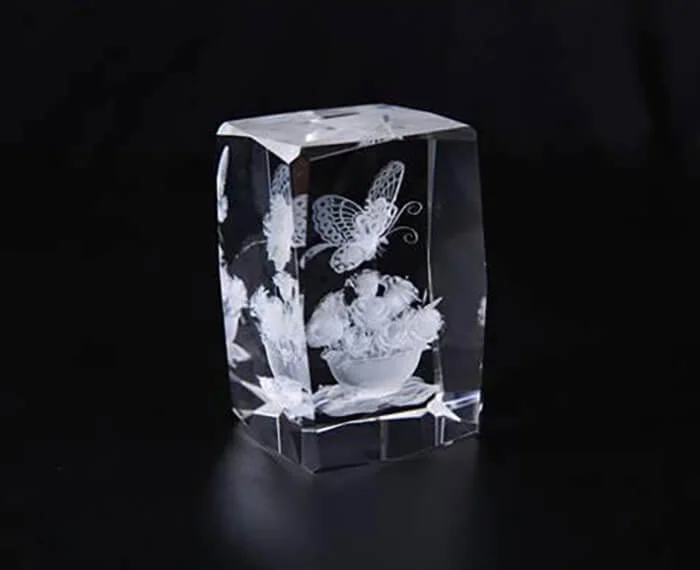
Engraving is the process of etching or carving designs, letters, or patterns onto a hard surface, such as metal, wood, or glass. It is a popular way to personalize jewelry, including rings, pendants, and bracelets. One popular form of engraving is adding a family crest to a piece of jewelry, which can be a beautiful way to honor your family heritage.
Engraving a family crest onto a piece of jewelry typically involves first creating a design or template of the crest. The design is then transferred onto the metal using a process known as etching, which involves applying an acid or chemical solution that dissolves the metal in the areas where the design has been drawn.
The process of engraving can vary depending on the type of metal being used. For example, engraving on softer metals like gold or silver is typically easier than on harder metals like platinum or titanium. Additionally, the size of the piece being engraved can also affect the process, as smaller pieces may require more intricate tools to achieve the desired level of detail.

Engraving is the process of etching or carving designs, letters, or patterns onto a hard surface, such as metal, wood, or glass. It is a popular way to personalize jewelry, including rings, pendants, and bracelets. One popular form of engraving is adding a family crest to a piece of jewelry, which can be a beautiful way to honor your family heritage.
Engraving a family crest onto a piece of jewelry typically involves first creating a design or template of the crest. The design is then transferred onto the metal using a process known as etching, which involves applying an acid or chemical solution that dissolves the metal in the areas where the design has been drawn.
The process of engraving can vary depending on the type of metal being used. For example, engraving on softer metals like gold or silver is typically easier than on harder metals like platinum or titanium. Additionally, the size of the piece being engraved can also affect the process, as smaller pieces may require more intricate tools to achieve the desired level of detail.
Another popular form of engraving is 3D crystal engraving. This involves using laser technology to etch a three-dimensional image or design onto a crystal surface. The process involves using a computer program to create a 3D model of the image or design, which is then sent to a laser engraving machine. The laser etches the design onto the crystal surface in layers, creating a 3D effect.
Engraving and 3D crystal engraving are both great ways to add a personal touch to your jewelry or create a unique gift for a loved one. When choosing a jeweler to perform engraving or 3D crystal engraving, it's important to choose a reputable and experienced professional who can ensure that the process is done correctly and to your satisfaction.
Overall, engraving is a versatile and beautiful way to add a personal touch to your jewelry or create a one-of-a-kind piece for a loved one. Whether you're adding a family crest or creating a 3D crystal image, the possibilities are endless.


Another popular form of engraving is 3D crystal engraving. This involves using laser technology to etch a three-dimensional image or design onto a crystal surface. The process involves using a computer program to create a 3D model of the image or design, which is then sent to a laser engraving machine. The laser etches the design onto the crystal surface in layers, creating a 3D effect.
Engraving and 3D crystal engraving are both great ways to add a personal touch to your jewelry or create a unique gift for a loved one. When choosing a jeweler to perform engraving or 3D crystal engraving, it's important to choose a reputable and experienced professional who can ensure that the process is done correctly and to your satisfaction.
Overall, engraving is a versatile and beautiful way to add a personal touch to your jewelry or create a one-of-a-kind piece for a loved one. Whether you're adding a family crest or creating a 3D crystal image, the possibilities are endless.
Repair Techniques and Processes for Head, Bezels, and Plating in Jewelry:
In the world of jewelry, the terms "heads" and "bezels" refer to the settings that hold gemstones in place. The head is the part of the setting that holds the stone, while the bezel is the metal rim that surrounds the stone and secures it in place. These settings can be made from various metals such as gold, silver, and platinum.
Plating is another common process used in jewelry-making, which involves applying a thin layer of metal onto a base metal. This is done to enhance the appearance of the jewelry piece, to prevent tarnishing, and to improve durability. Common types of plating include gold plating, silver plating, and rhodium plating.
If a head or bezel becomes damaged, it can often be repaired or replaced by a professional jeweler. The repair process usually involves removing the damaged head or bezel and replacing it with a new one. In some cases, the jeweler may also need to resize the new head or bezel to fit the stone properly.


In the world of jewelry, the terms "heads" and "bezels" refer to the settings that hold gemstones in place. The head is the part of the setting that holds the stone, while the bezel is the metal rim that surrounds the stone and secures it in place. These settings can be made from various metals such as gold, silver, and platinum.
Plating is another common process used in jewelry-making, which involves applying a thin layer of metal onto a base metal. This is done to enhance the appearance of the jewelry piece, to prevent tarnishing, and to improve durability. Common types of plating include gold plating, silver plating, and rhodium plating.
If a head or bezel becomes damaged, it can often be repaired or replaced by a professional jeweler. The repair process usually involves removing the damaged head or bezel and replacing it with a new one. In some cases, the jeweler may also need to resize the new head or bezel to fit the stone properly.
Plating can also be repaired if it becomes scratched or damaged. The process involves removing the damaged plating and applying a new layer of plating to the jewelry piece. However, it is important to note that plating can wear off over time with regular use, and may need to be reapplied periodically to maintain its appearance.
Overall, heads, bezels, and plating are all important components of jewelry-making. If any of these elements become damaged, it is best to have them repaired by a professional jeweler to ensure the integrity and value of the piece.
Stone Setting Techniques in Jewelry Repair
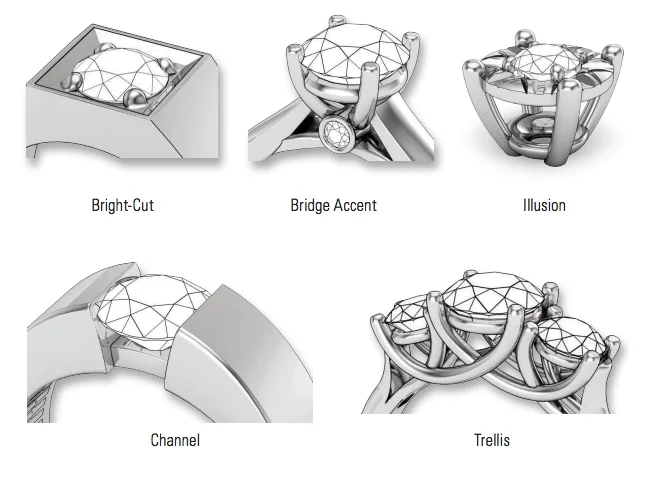
Stone setting is an important aspect of jewelry repair, as it involves securely placing a gemstone into a piece of jewelry. There are several types of stone setting techniques, each with its own unique characteristics and methods. One of the most common stone setting techniques is the prong setting, where small metal prongs are used to hold the stone in place. Another type of setting is the bezel setting, where a thin band of metal is wrapped around the edge of the gemstone to hold it in place. The channel setting is another popular stone setting technique, where the gemstones are set into a narrow channel in the metal band of the jewelry. The pave setting involves closely placing small stones in a tightly packed row to create a sparkling surface on a piece of jewelry.The process of stone setting requires specialized tools, such as pliers, tweezers, and burnishers. The jeweler carefully positions the stone in the setting and then uses the tools to secure it in place.

Stone setting is an important aspect of jewelry repair, as it involves securely placing a gemstone into a piece of jewelry. There are several types of stone setting techniques, each with its own unique characteristics and methods. One of the most common stone setting techniques is the prong setting, where small metal prongs are used to hold the stone in place. Another type of setting is the bezel setting, where a thin band of metal is wrapped around the edge of the gemstone to hold it in place. The channel setting is another popular stone setting technique, where the gemstones are set into a narrow channel in the metal band of the jewelry. The pave setting involves closely placing small stones in a tightly packed row to create a sparkling surface on a piece of jewelry.The process of stone setting requires specialized tools, such as pliers, tweezers, and burnishers. The jeweler carefully positions the stone in the setting and then uses the tools to secure it in place.
The process requires patience, skill, and attention to detail to ensure that the stone is securely set and that the final piece of jewelry is both beautiful and functional.
Professional jewelers have the training and experience needed to perform high-quality stone setting work, and they can help you choose the best setting technique for your gemstone and jewelry design. It is important to have stone setting work done by a skilled professional to ensure that the stone is set securely and that the piece of jewelry will last for many years to come.
Bails, Pendants, and Pin Stems: Repair Techniques and Processes:

Bails, pendants, and pin stems are essential components in many types of jewelry, from necklaces to brooches. Bails are small loops or hooks that are attached to pendants or charms to allow them to be hung from a chain or cord. Pendants are decorative pieces that hang from a chain or cord, often featuring a gemstone or other design element. Pin stems are the small metal rods or tubes that are used to fasten brooches or pins to clothing.

Bails, pendants, and pin stems are essential components in many types of jewelry, from necklaces to brooches. Bails are small loops or hooks that are attached to pendants or charms to allow them to be hung from a chain or cord. Pendants are decorative pieces that hang from a chain or cord, often featuring a gemstone or other design element. Pin stems are the small metal rods or tubes that are used to fasten brooches or pins to clothing.
Over time, bails, pendants, and pin stems can become worn or damaged, making it difficult or impossible to wear or use the jewelry piece. Fortunately, there are several repair techniques and processes that can be used to restore these components to their original condition.
For bails, the most common repair involves replacing the existing bail with a new one. This may involve soldering or welding the new bail onto the pendant or charm, ensuring that it is securely attached and can withstand the weight of the jewelry.
Pendants can also be repaired by replacing a damaged or broken component, such as a stone or metal setting. Depending on the extent of the damage, the jeweler may need to create a new setting or carefully reshape the existing one to ensure a proper fit.
Pin stems may require a variety of repairs, depending on the type of damage. In some cases, the pin stem may simply need to be straightened or reshaped to ensure a secure fit. In other cases, the pin stem may need to be replaced entirely, requiring the jeweler to carefully remove the old stem and replace it with a new one.
Overall, the repair techniques for bails, pendants, and pin stems vary depending on the specific type of damage and the materials involved. However, with the help of a skilled jeweler and careful attention to detail, it is often possible to restore these essential components and extend the life of your favorite jewelry pieces.
Jewelry Repair Techniques: Soldering Torch and Laser Welding
Soldering torch and laser welding are two common methods used in jewelry repair and fabrication.
Soldering is a process in which a metal alloy, known as solder, is melted to join two metal pieces together. A soldering torch is a tool used to apply heat to the metal pieces, causing the solder to melt and bond the pieces together. This method is commonly used in jewelry repair to join broken pieces of metal, add findings, or resize a ring. It requires skill and precision to ensure that the solder flows evenly and doesn't damage the surrounding metal.
On the other hand, laser welding is a more advanced and precise method of joining metal pieces together. It uses a focused beam of light to melt and fuse the metal at the joint, creating a strong and seamless bond. Laser welding is often used in high-end jewelry manufacturing and repair, as it allows for greater accuracy and control, as well as the ability to work with delicate and complex designs. It can also be used for stone setting, as the heat generated by the laser can be directed precisely to avoid damaging the stone.
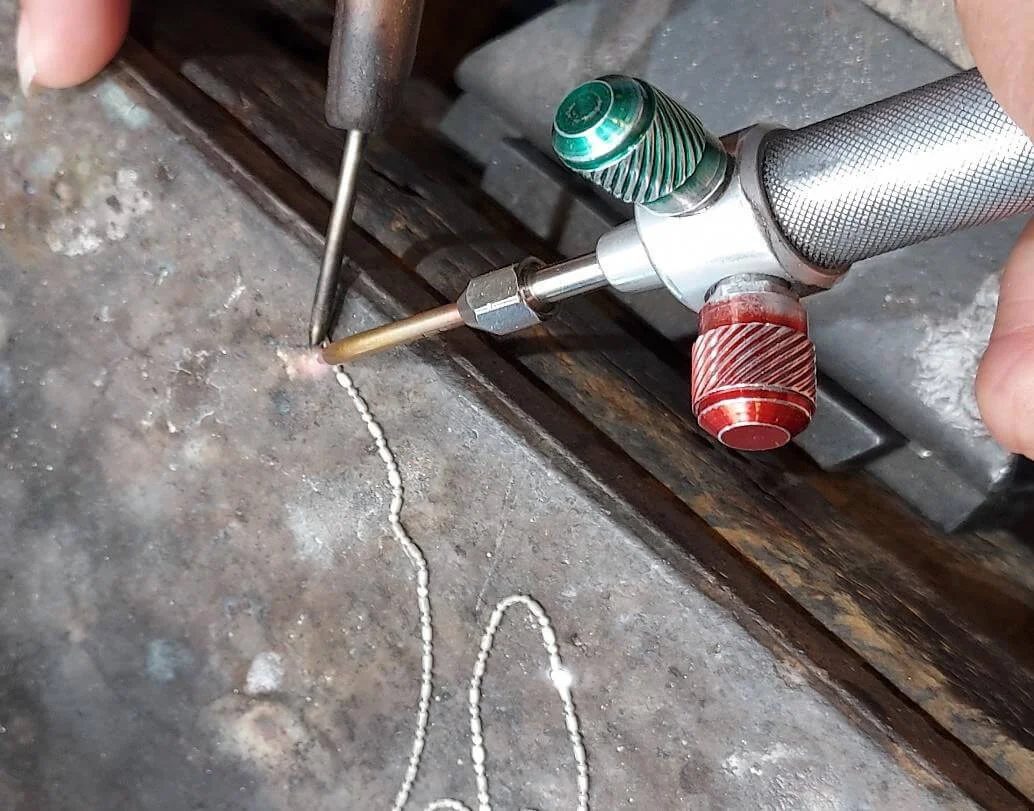

Soldering torch and laser welding are two common methods used in jewelry repair and fabrication.
Soldering is a process in which a metal alloy, known as solder, is melted to join two metal pieces together. A soldering torch is a tool used to apply heat to the metal pieces, causing the solder to melt and bond the pieces together. This method is commonly used in jewelry repair to join broken pieces of metal, add findings, or resize a ring. It requires skill and precision to ensure that the solder flows evenly and doesn't damage the surrounding metal.
On the other hand, laser welding is a more advanced and precise method of joining metal pieces together. It uses a focused beam of light to melt and fuse the metal at the joint, creating a strong and seamless bond. Laser welding is often used in high-end jewelry manufacturing and repair, as it allows for greater accuracy and control, as well as the ability to work with delicate and complex designs. It can also be used for stone setting, as the heat generated by the laser can be directed precisely to avoid damaging the stone.
In terms of jewelry repair, both soldering torch and laser welding have their strengths and weaknesses. Soldering torch is more versatile and can be used on a wider range of metals and repairs, but it can also be more challenging to achieve a seamless and invisible joint. Laser welding is more precise and creates a stronger bond, but it may not be suitable for all repairs and requires specialized equipment and training.
Ultimately, the choice between soldering torch and laser welding will depend on the specific repair needs and the skill level and equipment available to the jeweler. A professional jeweler with experience in both methods can advise on the best approach for a particular repair job.
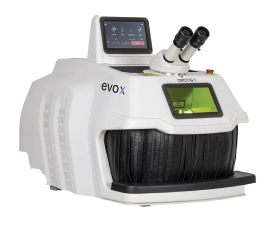

In terms of jewelry repair, both soldering torch and laser welding have their strengths and weaknesses. Soldering torch is more versatile and can be used on a wider range of metals and repairs, but it can also be more challenging to achieve a seamless and invisible joint. Laser welding is more precise and creates a stronger bond, but it may not be suitable for all repairs and requires specialized equipment and training.
Ultimately, the choice between soldering torch and laser welding will depend on the specific repair needs and the skill level and equipment available to the jeweler. A professional jeweler with experience in both methods can advise on the best approach for a particular repair job.
Watch Repair: Batteries and Band Shortening
Watch batteries and band shortening are two common types of watch repair that many people require at some point. Watch batteries can be of different types like regular, silver oxide, and solar batteries, and they need to be replaced carefully to avoid damaging the watch mechanism. Band shortening can be done by removing links or adjusting the buckle or clasp, and it requires expertise to avoid damaging the watch band. It is recommended to have watch repairs done by a professional watch repair technician to ensure proper maintenance and to extend the life of the watch.
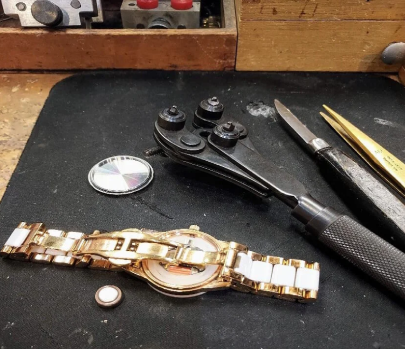
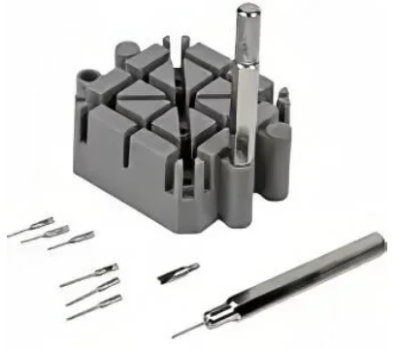
TEKNIK - Home Security
Frequently Asked Questions
How do I know if my jewelry needs repair?
Look for signs such as missing stones, loose settings, broken clasps, or any visible damage. If your jewelry no longer fits properly, it might also require resizing. Regular inspection is recommended to catch issues early.
Why should I consider jewelry repair?
Jewelry repair is essential to maintain the integrity and beauty of your precious pieces. It can fix damage, replace missing stones, and ensure your jewelry lasts for generations.
Do jewelry repairs come with a warranty?
Many reputable jewelers provide a warranty on their repair work. The terms and duration of the warranty vary, so it's important to inquire about this before authorizing any repairs.
How much does jewelry repair cost?
The cost varies depending on the type of repair needed, the materials involved, and the jeweler's rates. Simple repairs like soldering a broken chain may be less expensive than complex tasks like resetting gemstones. Obtain a quote from your jeweler before proceeding.
What is included in a typical jewelry repair service?
Common repair services include ring resizing, stone replacement, soldering broken pieces, fixing clasps, re-tipping prongs, and polishing. Some jewelers may also offer cleaning and maintenance as part of the service.


